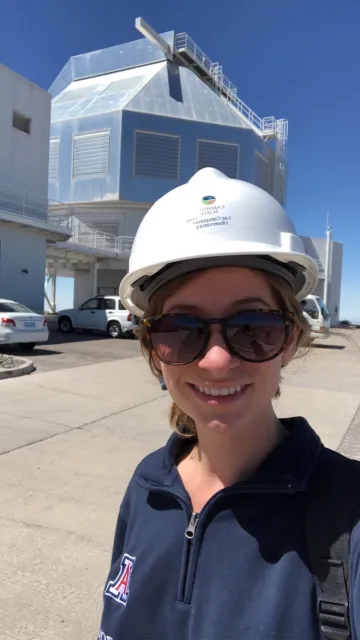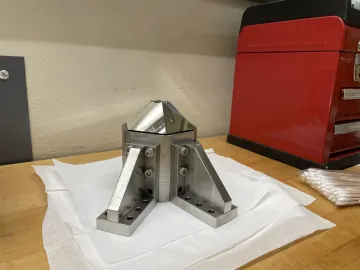Another Wavelength: Maggie Kautz

This week in Another Wavelength, we chat with 4th year Ph.D. student, Maggie Kautz. Maggie is advised by Professor Laird Close at Steward Observatory.
Where are you from?
Gilbert, AZ
What brought you to study optics?
It was probably two specific experiences. I took a tour of the Jet Propulsion Laboratory when I was in middle school, and I remember seeing scientists working on the Curiosity rover and models of all the spacecraft JPL has helped build. They were very complex, and I remember thinking, “I want to understand all of those parts someday.” I also took a tour of the Richard F. Caris Mirror Lab when I was 16 years old. I couldn’t believe such giant mirrors were being made under a football stadium. I was already interested in engineering and astronomy, but this showed me how optics could be a unique field that tied that together.
Who is your hero in science?
Professor Roger Angel, here at the University of Arizona! Professor Angel founded the mirror laboratory that drew me to optics and is a huge figure in the field of astronomy. I also have so much respect for his dedication to solar energy research in the latter portion of his career. He recognizes that climate change is an existential crisis and he’s spent time in Washington DC, making the case to politicians about how important it is to fund research on this topic.
Describe your research in 20 words or fewer.
We are developing a new extreme adaptive optics instrument for the 25.4 meter Giant Magellan Telescope.

Describe your research in 200 words or fewer.
The Extreme Wavefront Control Lab is currently developing a cutting-edge extreme adaptive optics instrument, GMagAO-X, that will be a first light instrument for the up-and-coming 25.4 meter Giant Magellan Telescope. Due to its segmented nature (ie multiple mirrors put together, rather than one monolithic mirror) it is vulnerable to segment piston errors. I work on the High Contrast Adaptive-optics Testbed (HCAT) that will practice co-phasing the seven mirror segments of the GMT via piston control. I have designed a special 6-sided reflective optic with a hole through the center that will be used to split up the seven segments of the GMT so each segment can have its own dedicated piston and wavefront control line. In this new extreme AO architecture, each segment will have its own 3,000 actuator deformable mirror to control wavefront errors and its own piezoelectric mirror to control piston errors. Seven 3,000 actuator DMs working in parallel is equivalent to a 21,000 actuator DM which has never been seen before. This sort of new technology will enable the GMT to be one of the highest performance telescopes in the world.
Name three neat facts about you.
- I like to think I have a fairly green thumb.
- During my junior year at the University of Arizona, I coordinated a gubernatorial primary debate on campus.
- I am bad at trivia and intramural volleyball, and I love trivia and intramural volleyball.

A special 6-sided reflective optic with a hole through the center that will be used to split up the seven segments of the GMT so each segment can have its own dedicated piston and wavefront control line.
Maggie Kautz
